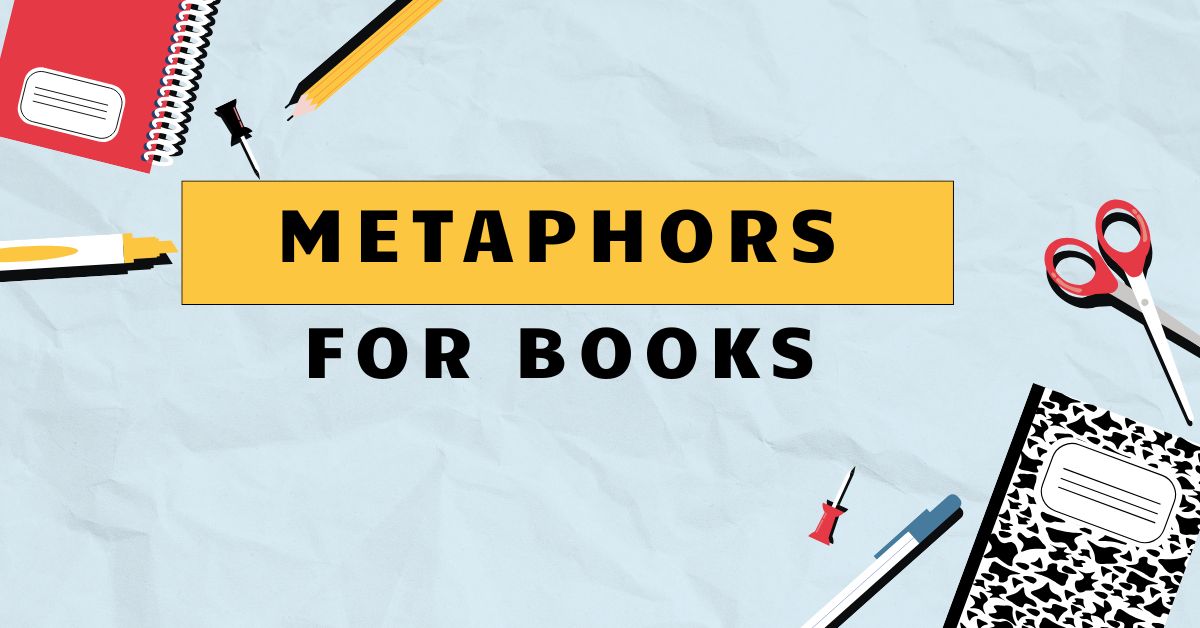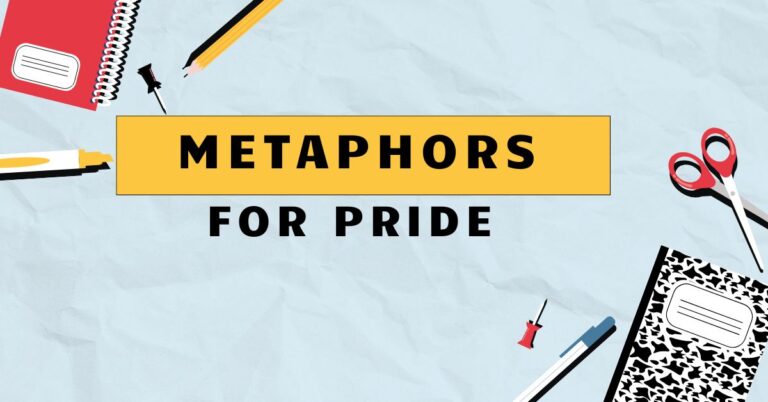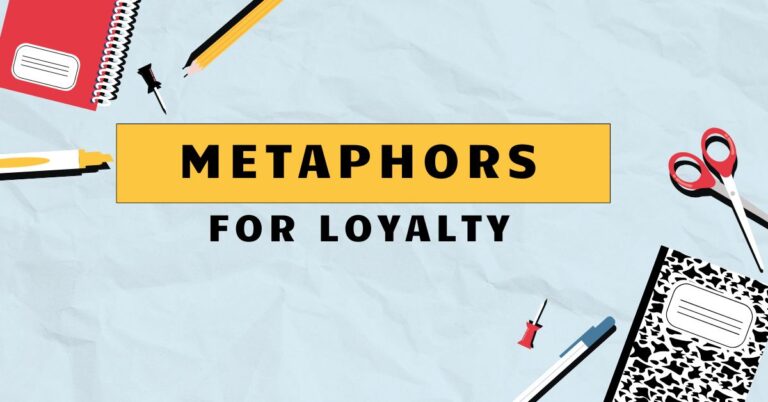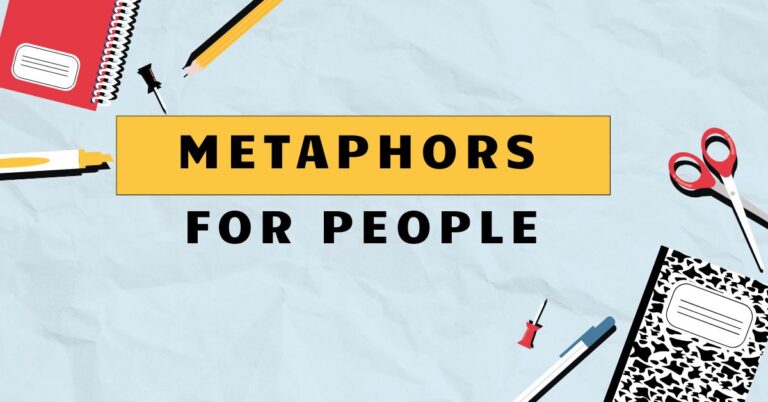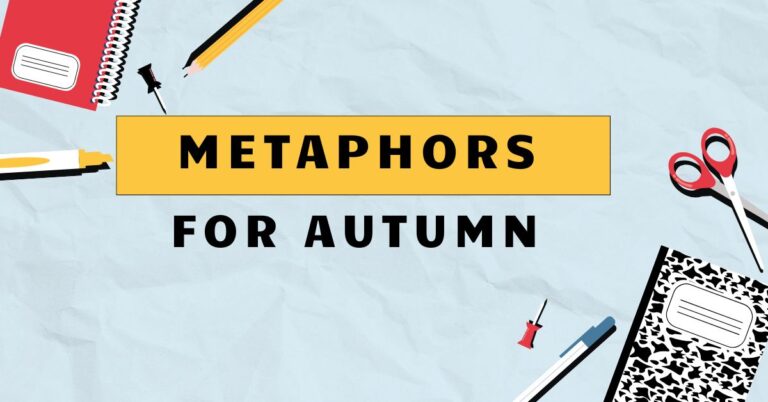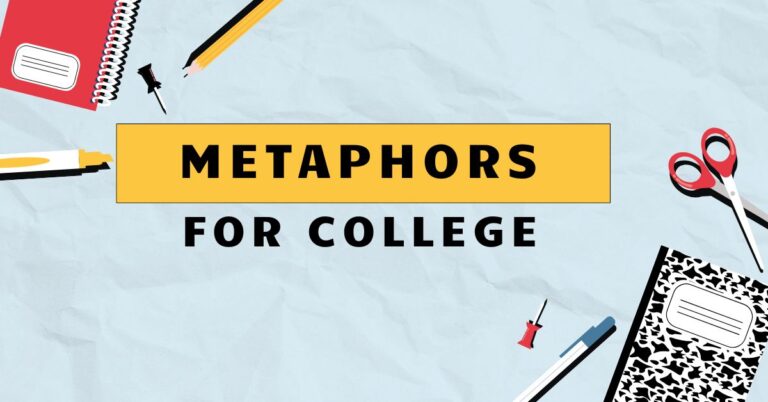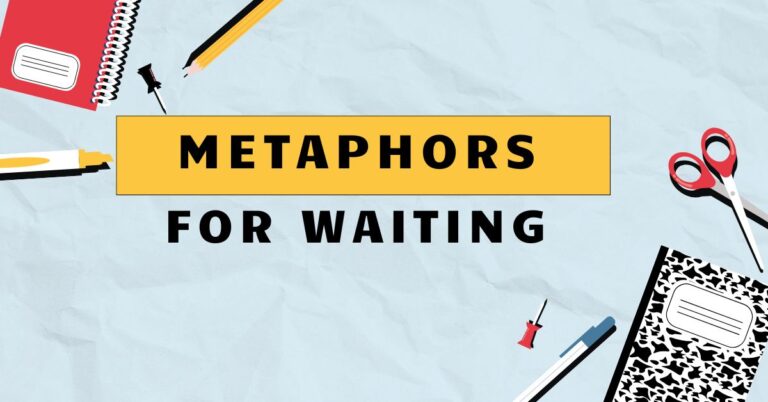33 Books as Metaphors: Exploring Figurative Language
Metaphors are powerful tools in language, allowing us to understand complex ideas by relating them to something familiar. When we use metaphors for books, we’re not just talking about bound pages and ink; we’re exploring the deeper meaning, impact, and significance of literature.
Understanding these metaphors enriches our comprehension of both language and the role books play in our lives. This article is designed for students, educators, and avid readers who want to deepen their understanding of figurative language and appreciate the multifaceted nature of books.
This exploration will cover the definition, structural elements, various categories, examples, usage rules, common mistakes, practice exercises, advanced topics, and frequently asked questions related to metaphors for books. By the end of this guide, you’ll be able to identify, interpret, and even create your own compelling metaphors that capture the essence of the written word.
Table of Contents
- Definition of Metaphors for Books
- Structural Breakdown of Book Metaphors
- Types and Categories of Book Metaphors
- Examples of Metaphors for Books
- Usage Rules for Book Metaphors
- Common Mistakes When Using Book Metaphors
- Practice Exercises
- Advanced Topics in Book Metaphors
- Frequently Asked Questions
- Conclusion
Definition of Metaphors for Books
A metaphor is a figure of speech that directly compares two unlike things without using “like” or “as.” When applied to books, metaphors go beyond the literal object and focus on what books represent: knowledge, journeys, experiences, emotions, and more. These metaphors often highlight the transformative power of reading and the impact books have on our understanding of the world and ourselves.
Metaphors for books can be classified based on what aspect of the book they emphasize. Some focus on the book as asource of knowledge, others on itsability to transportthe reader, and still others on itsemotional impact.
The function of these metaphors is to create a deeper, more evocative understanding of the book’s role and significance. They are commonly found in literary criticism, book reviews, personal essays, and everyday conversations about reading.
Consider this example: “That book was a window into another world.” Here, the book isn’t literally a window, but the metaphor suggests it provides a clear view and access to a different reality. This highlights the book’s ability to transport the reader to a new and unfamiliar place.
Structural Breakdown of Book Metaphors
Understanding the structure of a book metaphor involves identifying the two key elements: thetenorand thevehicle. The tenor is the subject being described (in this case, the book), and the vehicle is the object or concept used to represent it.
The connection between the tenor and vehicle creates the metaphorical meaning.
For example, in the metaphor “Books are bridges to understanding,” the tenor is “books,” and the vehicle is “bridges.” The shared characteristic is the ability to connect two separate entities or ideas. The metaphor suggests that books connect us to new knowledge, perspectives, and cultures.
Metaphorical meaning is created throughimplicationandassociation. The reader must infer the connection between the tenor and vehicle based on their shared qualities.
Effective book metaphors rely on common cultural understandings and associations to resonate with the audience. A complex metaphor might require more interpretation and cultural context to fully grasp its meaning.
Types and Categories of Book Metaphors
Book metaphors can be categorized based on various aspects, including the specific quality of the book being emphasized, the type of experience it provides, or the overall impact it has on the reader. Here are several key categories:
Books as Sources of Knowledge and Wisdom
These metaphors emphasize the book’s role in providing information, insights, and understanding.
Books as Journeys and Adventures
These metaphors focus on the book’s ability to transport the reader to different places, times, and experiences.
Books as Mirrors and Windows
These metaphors highlight the book’s capacity to reflect our own lives or offer a glimpse into different perspectives.
Books as Companions and Friends
These metaphors emphasize the emotional connection between the reader and the book, highlighting the comfort, support, and solace that books can provide.
Books as Tools for Transformation
These metaphors focus on the book’s power to change our perspectives, beliefs, and lives.
Examples of Metaphors for Books
Here are examples of metaphors for books, organized by category. Each entry includes the metaphor and an explanation of its meaning.
Examples of Books as Sources of Knowledge and Wisdom
The following table provides examples of books as sources of knowledge and wisdom. Each example highlights how books are seen as repositories of information and vehicles for learning.
| Metaphor | Explanation |
|---|---|
| “The book was a treasure trove of information.” | Suggests the book is a valuable source of knowledge, like a chest filled with precious gems. |
| “It was a textbook on life.” | Implies the book provides lessons and guidance applicable to real-world experiences. |
| “The book was a map to understanding complex theories.” | Suggests the book guides the reader through difficult concepts, making them easier to navigate. |
| “This book is a goldmine of insights.” | Similar to “treasure trove,” emphasizing the book’s rich and valuable content. |
| “That novel was a fountain of wisdom.” | Implies the book is an abundant and continuous source of knowledge. |
| “The biography was a blueprint for success.” | Suggests the book provides a plan or model for achieving a specific goal. |
| “This book is a key to unlocking new perspectives.” | Implies the book provides access to new ways of thinking and understanding. |
| “That historical account was a time capsule of the past.” | Suggests the book preserves and presents a snapshot of a specific historical period. |
| “The encyclopedia was a universe of knowledge.” | Highlights the vast and comprehensive nature of the book’s contents. |
| “It’s a guidebook for navigating the complexities of relationships.” | Suggests the book offers practical advice and strategies for managing interpersonal connections. |
| “The book was a encyclopedia of historical events.” | Emphasizes the book’s comprehensive coverage of historical information. |
| “It served as a manual for understanding complex systems.” | Suggests the book provides step-by-step instructions and explanations. |
| “The novel was a school of hard knocks.” | Implies the book provides valuable but difficult life lessons. |
| “It’s a compendium of ancient wisdom.” | Suggests the book is a collection of valuable and timeless knowledge. |
| “The book was a portal to ancient civilizations.” | Implies the book provides access to the history and culture of past societies. |
| “This book is a foundation for future learning.” | Suggests the book provides a solid base upon which to build further knowledge. |
| “That scientific paper was a landmark in the field.” | Highlights the book’s significance and importance in its respective area. |
| “It’s a beacon of hope in dark times.” | Implies the book provides guidance and inspiration during difficult periods. |
| “The book was a laboratory for exploring new ideas.” | Suggests the book provides a space for experimentation and intellectual exploration. |
| “That textbook is a building block for a successful career.” | Implies the book is an essential component for achieving professional goals. |
| “The book was a syllabus for life’s toughest lessons.” | Suggests the book outlines the essential experiences and challenges one must face. |
| “It’s a dictionary of human emotions.” | Implies the book provides a comprehensive understanding of various feelings. |
| “The autobiography was a chronicle of a remarkable life.” | Suggests the book provides a detailed and sequential account of someone’s experiences. |
| “This book is a seed of inspiration for future generations.” | Implies the book will plant ideas and motivations in the minds of readers to come. |
Examples of Books as Journeys and Adventures
The following table illustrates how books can be seen as journeys and adventures, transporting readers to different worlds and experiences.
| Metaphor | Explanation |
|---|---|
| “Reading that book was like embarking on a voyage.” | Suggests the book takes the reader on an exciting and transformative journey. |
| “It was a roller coaster of emotions.” | Implies the book is filled with ups and downs, creating a thrilling and unpredictable experience. |
| “The book was a time machine, transporting me to the 18th century.” | Suggests the book allows the reader to travel back in time and experience a different era. |
| “That novel was a passport to another culture.” | Implies the book provides access to new and unfamiliar customs, traditions, and perspectives. |
| “Reading that book was like climbing a mountain.” | Suggests the book presents challenges and requires effort, but ultimately leads to a rewarding experience. |
| “The story was a labyrinth of twists and turns.” | Implies the plot is complex and confusing, requiring the reader to navigate carefully. |
| “It was a safari through the human heart.” | Suggests the book explores the complexities and mysteries of human emotions and relationships. |
| “That book was a spaceship to another planet.” | Implies the book transports the reader to a completely different and imaginative world. |
| “Reading that novel was like taking a plunge into the unknown.” | Suggests the book leads the reader into uncharted territory, filled with uncertainty and excitement. |
| “The book was a treasure hunt, with clues hidden on every page.” | Implies the reader must actively search for meaning and insights within the text. |
| “It felt like a journey through uncharted territory.” | Suggests the book explores unfamiliar themes and ideas. |
| “The novel was a quest for self-discovery.” | Implies the protagonist’s journey leads to personal growth and understanding. |
| “Reading it was like exploring a vast ocean.” | Suggests the book is deep and expansive, with many hidden depths. |
| “The book was a rollercoaster ride of emotions.” | Emphasizes the intense and varied emotional experiences the reader goes through. |
| “It’s a pilgrimage to the heart of human nature.” | Suggests the book is a profound and meaningful exploration of human existence. |
| “The book was a gateway to another dimension.” | Implies the book provides access to a different reality or state of consciousness. |
| “It read like a roadmap to a better future.” | Suggests the book offers guidance and direction for improving one’s life. |
| “The story was an expedition into the unknown.” | Implies the book bravely explores uncharted territories and ideas. |
| “Reading it was like diving into a bottomless pit of intrigue.” | Suggests the book is endlessly fascinating and captivating. |
| “The book was a time warp back to my childhood.” | Implies the book evokes nostalgic memories and feelings from the past. |
| “It was a marathon of intellectual stimulation.” | Suggests the book requires sustained effort and provides continuous mental engagement. |
| “The novel was a crossroads where different lives intersected.” | Implies the book explores the connections and interactions between various characters. |
| “Reading it was like navigating a stormy sea.” | Suggests the book presents challenges and difficulties that must be overcome. |
| “The book was a portal to a forgotten world.” | Implies the book provides access to a past era or lost civilization. |
Examples of Books as Mirrors and Windows
The following table illustrates how books can serve as both mirrors, reflecting ourselves and our experiences, and windows, providing glimpses into different perspectives and worlds.
| Metaphor | Explanation |
|---|---|
| “The book was a mirror reflecting my own struggles.” | Suggests the book resonates with the reader’s personal experiences and challenges. |
| “It was a window into a different culture.” | Implies the book provides insight into the customs, beliefs, and values of another society. |
| “The novel was a looking glass into the human soul.” | Suggests the book offers a deep and introspective exploration of human nature. |
| “It was a prism refracting the light of human experience.” | Implies the book presents multiple perspectives and facets of the human condition. |
| “The book was a lens focusing on the details of daily life.” | Suggests the book highlights the significance of everyday moments and observations. |
| “It served as a microscope, revealing hidden truths about society.” | Implies the book examines social structures and behaviors with great detail and scrutiny. |
| “The book was a telescope, allowing me to see beyond my own limited perspective.” | Suggests the book broadens the reader’s understanding and awareness of the world. |
| “It was a periscope into the lives of others.” | Implies the book provides a sneak peek into the experiences and perspectives of different individuals. |
| “The book was a screen projecting the hopes and fears of humanity.” | Suggests the book reflects the collective aspirations and anxieties of humankind. |
| “It was a frame around a portrait of a bygone era.” | Implies the book captures and preserves the essence of a historical period. |
| “The story was a reflection of society’s values.” | Suggests the book portrays the beliefs and norms of a particular culture. |
| “It offered a glimpse into the lives of ordinary people.” | Implies the book provides insight into the everyday experiences of common individuals. |
| “The book was a portal to understanding different perspectives.” | Suggests the book provides access to various viewpoints and opinions. |
| “It served as a window pane to the past.” | Implies the book offers a clear view of historical events and circumstances. |
| “The novel was a looking glass reflecting our inner selves.” | Suggests the book helps readers understand their own thoughts and emotions. |
| “It was a spotlight illuminating the dark corners of the human psyche.” | Implies the book reveals hidden or suppressed aspects of human consciousness. |
| “The book was a canvas portraying the complexities of human relationships.” | Suggests the book depicts the intricate dynamics between individuals. |
| “It was a peephole into the lives of the privileged and powerful.” | Implies the book provides a secretive view of the experiences of the elite. |
| “The book was a prism breaking down complex emotions into simpler parts.” | Suggests the book analyzes and simplifies complicated feelings. |
| “It was a magnifying glass focused on the nuances of human behavior.” | Implies the book examines the subtle details of people’s actions and motivations. |
Usage Rules for Book Metaphors
Using book metaphors effectively requires attention to several rules:
- Clarity: The metaphor should be easily understood. Avoid obscure or overly complex comparisons.
- Relevance: The comparison should be meaningful and appropriate to the context.
- Originality: While common metaphors can be effective, strive for fresh and creative comparisons that capture the reader’s attention.
- Consistency: Avoid mixing metaphors within the same sentence or paragraph.
- Audience: Consider your audience and their familiarity with the concepts you are comparing.
For example, instead of saying “The book was a complicated algorithm,” which might only resonate with those familiar with computer science, you could say “The book was a complicated puzzle,” which is more universally understandable.
Common Mistakes When Using Book Metaphors
Several common mistakes can weaken the impact of book metaphors:
- Clichés: Overused metaphors like “a page-turner” can lack impact.
- Mixed Metaphors: Combining incompatible metaphors can create confusion. For example, “The book was a rollercoaster that paved the way to success” mixes the ideas of an exciting ride with building a road, which is nonsensical.
- Overly Complex Metaphors: Using metaphors that are too abstract or difficult to understand can alienate the reader.
- Inappropriate Tone: The metaphor should match the tone of the writing. A humorous metaphor might be inappropriate in a serious analysis.
Here are some examples of common mistakes and their corrections:
| Incorrect | Correct | Explanation |
|---|---|---|
| “The book was a rollercoaster that also paved the way to success.” | “The book was a rollercoaster of emotions.” OR “The book paved the way to success.” | Avoid mixing metaphors. Choose one image and stick with it. |
| “The book was a black hole of quantum entanglement.” | “The book was a mystery that drew me in.” | Ensure the metaphor is accessible to the target audience. |
| “The book was a page-turner that also revolutionized physics.” | “The book was a page-turner.” OR “The book revolutionized physics.” | Avoid using clichés and overused phrases. |
Practice Exercises
Test your understanding of book metaphors with the following exercises.
Exercise 1: Identifying Book Metaphors
Identify the metaphor in each sentence and explain its meaning.
| Question | Answer |
|---|---|
| 1. This novel is a beacon of hope in a troubled world. | Metaphor: Beacon. Meaning: The novel provides guidance and inspiration during difficult times. |
| 2. The book was a time capsule, preserving the essence of the 1920s. | Metaphor: Time capsule. Meaning: The book captures and presents a snapshot of a specific historical period. |
| 3. Reading that biography was like climbing a mountain of information. | Metaphor: Mountain. Meaning: The biography presented challenges and required effort to understand. |
| 4. The story was a labyrinth of interconnected plot lines. | Metaphor: Labyrinth. Meaning: The plot was complex and confusing, requiring careful navigation. |
| 5. This book is a key to understanding the complexities of human relationships. | Metaphor: Key. Meaning: The book provides access to new ways of understanding human interactions. |
| 6. The novel was a mirror, reflecting the reader’s own insecurities. | Metaphor: Mirror. Meaning: The novel resonates with the reader’s personal experiences and insecurities. |
| 7. That historical account was a window into a bygone era. | Metaphor: Window. Meaning: The book provides insight into the customs, beliefs, and values of another society. |
| 8. The book served as a blueprint for a successful career. | Metaphor: Blueprint. Meaning: The book provides a plan or model for achieving professional goals. |
| 9. The novel was a safari through the human heart. | Metaphor: Safari. Meaning: The book explores the complexities and mysteries of human emotions and relationships. |
| 10. The textbook was a building block for my future education. | Metaphor: Building block. Meaning: The textbook is an essential component for achieving educational goals. |
Exercise 2: Creating Book Metaphors
Create your own metaphor for each of the following prompts.
| Prompt | Your Metaphor |
|---|---|
| 1. A book that changed your life. | Answer: The book was a guiding star, illuminating a new path in my life. |
| 2. A book that you found boring. | Answer: The book was a desert, dry and devoid of any interesting content. |
| 3. A book that made you laugh. | Answer: The book was a comedy show, filled with witty jokes and hilarious situations. |
| 4. A book that made you cry. | Answer: The book was a rainstorm, unleashing a torrent of emotions that left me in tears. |
| 5. A book that taught you something new. | Answer: The book was a classroom, providing me with knowledge and insights I never had before. |
| 6. A book with a complex plot. | Answer: The book was a tangled web, with interconnected storylines that required careful unraveling. |
| 7. A book with memorable characters. | Answer: The book was a gallery, showcasing portraits of unforgettable individuals. |
| 8. A book that transported you to another world. | Answer: The book was a spaceship, transporting me to a distant and imaginative realm. |
| 9. A book that inspired you to take action. | Answer: The book was a call to arms, motivating me to stand up for what I believe in. |
| 10. A book that challenged your beliefs. | Answer: The book was a debate, forcing me to confront my own assumptions and prejudices. |
Advanced Topics in Book Metaphors
For advanced learners, exploring the nuances of book metaphors can involve analyzing their cultural and historical contexts. The meaning of a metaphor can shift depending on the prevailing social attitudes and beliefs.
For example, a metaphor comparing a book to a “forbidden fruit” might have different connotations in a society with strict censorship laws compared to one with greater freedom of expression.
Another advanced topic is the use ofextended metaphors, where a single metaphorical comparison is developed and elaborated throughout a text. This can create a powerful and cohesive effect, deepening the reader’s understanding of the book’s themes and ideas.
Analyzing the effectiveness of extended metaphors requires close attention to the author’s craft and the subtle ways in which the comparison is sustained and reinforced.
Additionally, exploring the interplay between metaphors and other figures of speech, such as similes and personification, can reveal the complexity of literary language. Understanding how these devices work together can enhance your appreciation of the author’s artistry and the richness of the text.
Frequently Asked Questions
- What is the difference between a metaphor and a simile?
A metaphor directly compares two unlike things without using “like” or “as,” while a simile uses “like” or “as” to make the comparison. For example, “The book was a window” is a metaphor, while “The book was like a window” is a simile.
- Why are metaphors used in writing about books?
Metaphors add depth and meaning to writing. They help readers understand complex ideas by relating them to something familiar and create a more vivid and engaging reading experience.
- How can I identify a metaphor in a text?
Look for statements that describe something as being something else, without using “like” or “as.” Consider the context and whether the statement is meant to be taken literally.
- What makes a good book metaphor?
A good book metaphor is clear, relevant, original, and consistent. It should resonate with the reader and enhance their understanding of the book’s meaning and impact.
- Can a metaphor be too complex?
Yes, a metaphor can be too complex if it is difficult to understand or if it requires specialized knowledge that the reader may not possess. The best metaphors are accessible and relatable.
- How do cultural contexts affect the interpretation of book metaphors?
Cultural contexts can significantly influence the interpretation of metaphors. Different cultures may have different associations and understandings of certain symbols and concepts, which can affect the meaning of the metaphor.
- What is an extended metaphor, and how is it used?
An extended metaphor is a metaphor that is developed and elaborated throughout a text. It is used to create a cohesive and impactful effect, deepening the reader’s understanding of the book’s themes and ideas.
- How can I improve my ability to create effective book metaphors?
Practice identifying and analyzing metaphors in different texts. Pay attention to the connections between the tenor and vehicle, and experiment with different comparisons. Read widely and expose yourself to diverse perspectives and writing styles. Consider taking creative writing classes or workshops to further hone your skills.
- What role do metaphors play in literary criticism?
Metaphors are crucial in literary criticism because they offer a lens through which critics can interpret and analyze the deeper meanings and thematic elements within a book. They allow for a more nuanced and insightful understanding of the author’s intent and the book’s overall impact.
- Are there any specific types of books that lend themselves particularly well to metaphorical descriptions?
Yes, certain genres like fantasy, science fiction, and allegorical novels often lend themselves well to metaphorical descriptions due to their inherent use of symbolism and imaginative concepts. Books dealing with profound emotional or philosophical themes also provide rich ground for metaphorical interpretations.
- How important is originality when crafting metaphors for books?
Originality is highly valued when crafting metaphors for books because it allows you to offer a fresh and unique perspective that can capture the reader’s attention and provide new insights. While common metaphors can be effective, striving for originality can make your analysis more memorable and impactful.
Conclusion
Understanding metaphors for books opens up a new dimension of appreciation for literature. By recognizing and interpreting these figurative comparisons, we gain a deeper understanding of the book’s meaning, impact, and significance.
Metaphors transform simple descriptions into evocative expressions, highlighting the transformative power of reading. Whether you’re a student, educator, or avid reader, mastering the art of book metaphors will enrich your understanding of language and the written word.
Continue exploring the world of figurative language and practice identifying and creating your own metaphors. The more you engage with these concepts, the more adept you’ll become at appreciating the subtle nuances and profound insights that metaphors can offer.
Remember, the best metaphors are clear, relevant, and original, capturing the essence of the book in a memorable and meaningful way. Happy reading and happy metaphor-making!

